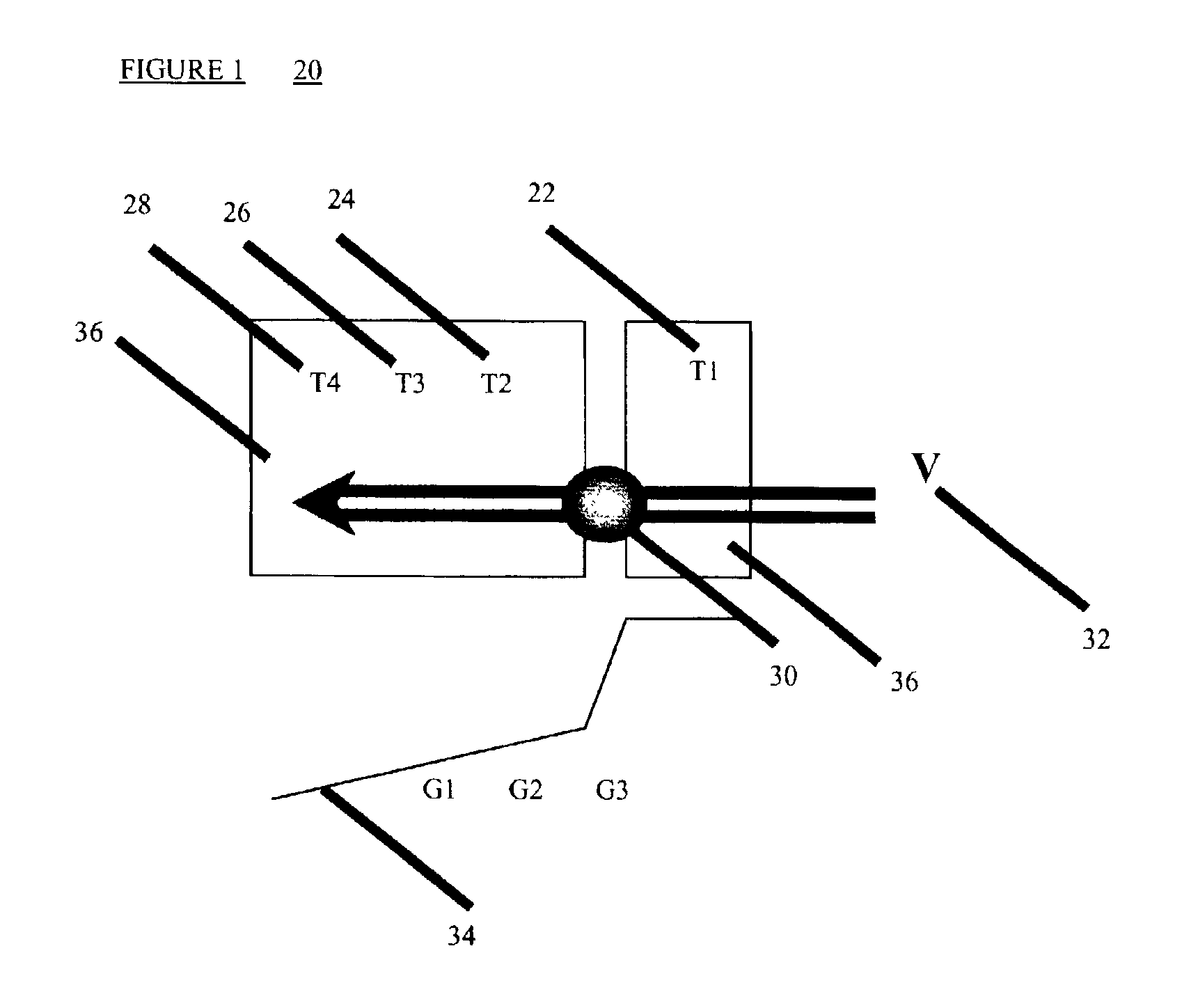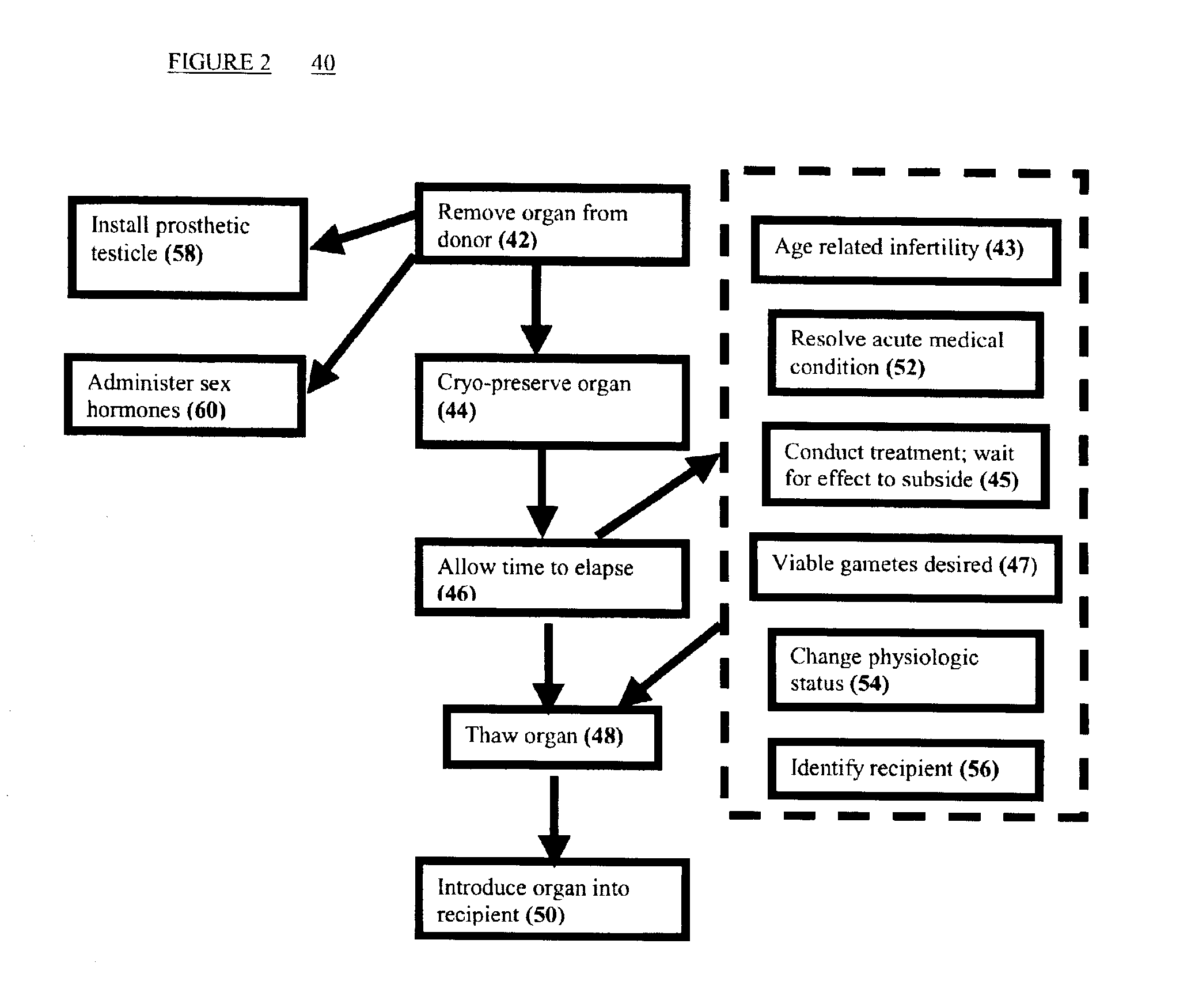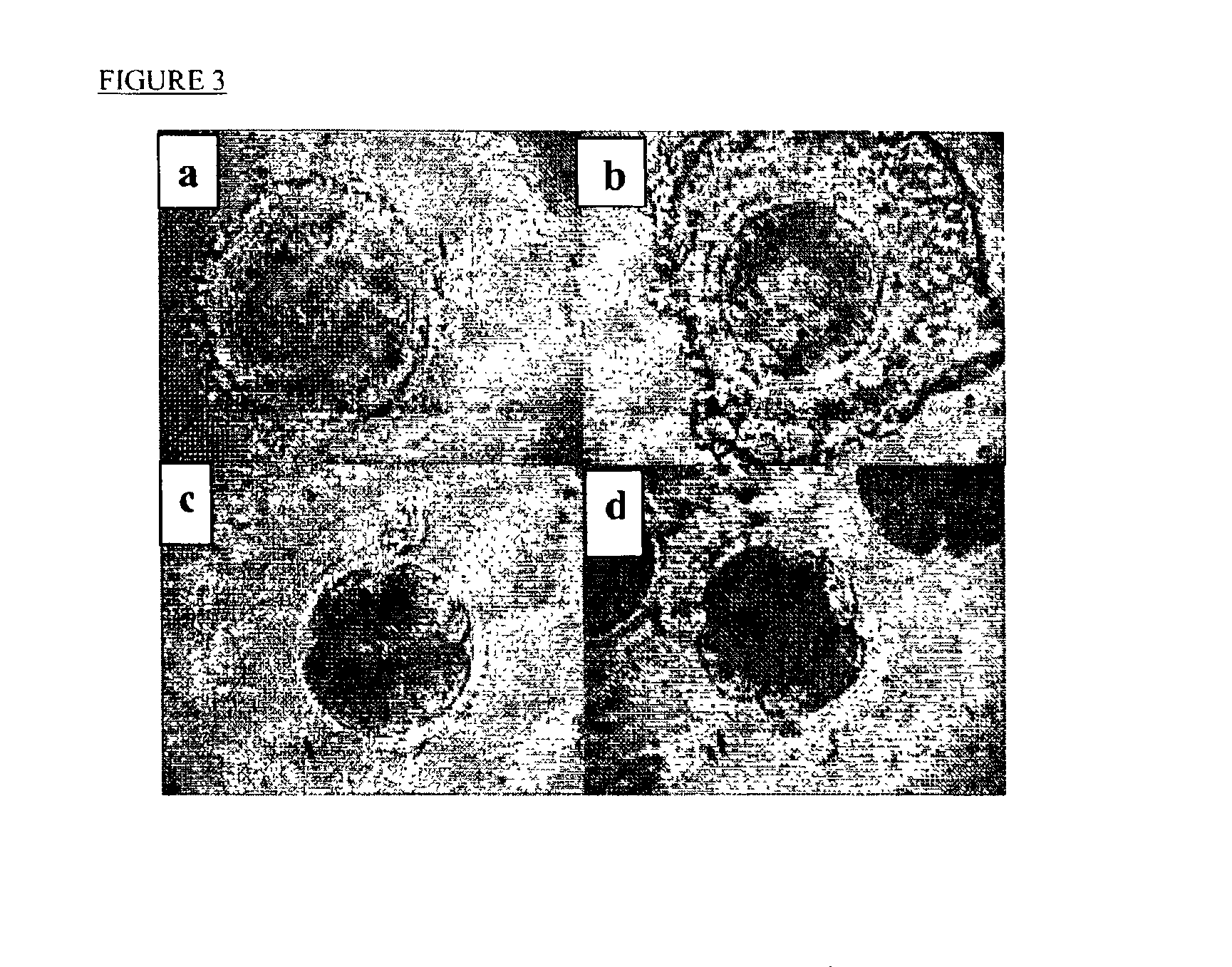Methods of preserving functionality of an ovary, preserving fertility of a patient undergoing a treatment expected to cause sterility and assuring a supply of viable gametes for future use
a technology for preserving functionality and fertility, applied in the field of organ preservation, can solve the problems of affecting the fertility of patients undergoing treatment expected to cause sterility, affecting the function of ovaries, and affecting the fertility of patients, so as to achieve the effect of preserving functionality and patient fertility
- Summary
- Abstract
- Description
- Claims
- Application Information
AI Technical Summary
Benefits of technology
Problems solved by technology
Method used
Image
Examples
example 1
In vitro Assay of Viability of Sheep Ovaries after Thawing
[0070]In order to determine the effect of freezing temperature on subsequent viability, fifteen Assaf sheep ovaries were collected 10 min after slaughter. The ovaries were perfused with a Belzer UW solution(ViaSpan®, Do Pont Pharma, USA)+10% DMSO (Sigma, St. Lois, USA) for 3 min, in order to obtain maximal permeability of the organ to DMSO. After perfusion, the ovaries were loaded into 16×100 mm glass test tubes (Manara, Israel) in UW+10% DMSO and transferred to the freezing apparatus (IMT, Israel) described hereinabove. Control ovaries were perfused as above but were not cryopreserved. Ovaries were frozen to different temperatures as detailed in table 1.
[0071]
TABLE 1Freezing parameters of whole ovine ovariesEXP.T 1T 2T 3T 4T5VCR10° C.−6° C.−10° C.−14° C.—0.03 mm / s0.1° C. / min20° C.−6° C.−18° C.−30° C.—0.01 mm / s0.1° C. / min30° C.−6° C.−18° C.−30° C.−196° C.0.01 mm / s0 1° C. / min
[0072]Briefly, the cooling rate was set to 0.1° C. / m...
example 2
In vivo Assay of Viability Sheep Ovaries after Thawing
[0077]In order to verify the results of Example 1 in an in vivo system, eleven-month-old Assaf sheep were subjected to oophorectomy under general anaesthesia via longitudinal laparotomy. The uterus and ovaries were exposed and a dissection of the right ovarian artery and vein was performed. The ovary was perfused in vivo with UW+10% DMSO for 3 min. It was then excised and inserted into a freezing tube containing UW+10% DMSO. Slow freezing was performed by cooling from 0 to −6° C. over 2 min, seeding was done before entering −6° C. and cooling to −14° C., −30° C. and thawing after 15 minutes or to −30° C. and then direct plunging into LN and then thawing. The cooling rate of the three different procedures was 0.1° C. / min. After 15 min at the final temperature thawing was performed by plunging the test tube into a 66° C. water bath for 20 s and then into a 40° C. water bath for 2 min. Ovarian vascular transplantation was performed ...
PUM
 Login to View More
Login to View More Abstract
Description
Claims
Application Information
 Login to View More
Login to View More - R&D
- Intellectual Property
- Life Sciences
- Materials
- Tech Scout
- Unparalleled Data Quality
- Higher Quality Content
- 60% Fewer Hallucinations
Browse by: Latest US Patents, China's latest patents, Technical Efficacy Thesaurus, Application Domain, Technology Topic, Popular Technical Reports.
© 2025 PatSnap. All rights reserved.Legal|Privacy policy|Modern Slavery Act Transparency Statement|Sitemap|About US| Contact US: help@patsnap.com



